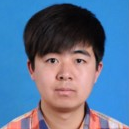Mineral Resource Management 2023: Assessment, Mining and Processing
A special issue of Resources (ISSN 2079-9276).
Deadline for manuscript submissions: 30 April 2024 | Viewed by 6129
Special Issue Editors
Interests: mineral resource
Special Issues, Collections and Topics in MDPI journals
Interests: flotation of oxide minerals; mineral crystal chemistry; flotation reagent molecular design; mineral/reagent/water interfacial science; waste treatment in minerals processing
Special Issues, Collections and Topics in MDPI journals
Special Issue Information
Dear Colleagues,
Mineral resources supply key raw materials for civilian industry, high-technology industry and even national defence industry. Due to constant exploitation and consumption, high-grade mineral resources are gradually decreasing. As a consequence, proper evaluation, exploitation and utilization of mineral resources are closely related to the future development of mankind. This Special Issue is focused on (but not restricted to) innovative research papers and original reviews covering the latest advances in theories, methodologies and applications in the fields of assessment, mining and processing of mineral resources, and we welcome submissions from any researcher who is interested in mineral resource management.
Dr. Jian Cao
Prof. Dr. Zhiyong Gao
Guest Editors
Manuscript Submission Information
Manuscripts should be submitted online at www.mdpi.com by registering and logging in to this website. Once you are registered, click here to go to the submission form. Manuscripts can be submitted until the deadline. All submissions that pass pre-check are peer-reviewed. Accepted papers will be published continuously in the journal (as soon as accepted) and will be listed together on the special issue website. Research articles, review articles as well as short communications are invited. For planned papers, a title and short abstract (about 100 words) can be sent to the Editorial Office for announcement on this website.
Submitted manuscripts should not have been published previously, nor be under consideration for publication elsewhere (except conference proceedings papers). All manuscripts are thoroughly refereed through a single-blind peer-review process. A guide for authors and other relevant information for submission of manuscripts is available on the Instructions for Authors page. Resources is an international peer-reviewed open access monthly journal published by MDPI.
Please visit the Instructions for Authors page before submitting a manuscript. The Article Processing Charge (APC) for publication in this open access journal is 1600 CHF (Swiss Francs). Submitted papers should be well formatted and use good English. Authors may use MDPI's English editing service prior to publication or during author revisions.
Keywords
- mineral resource management
- mineral assessment
- geological engineering
- mining engineering
- mine safety science and technology
- mine environmental protection and sustainable development
- mineral processing
- extractive metallurgy






